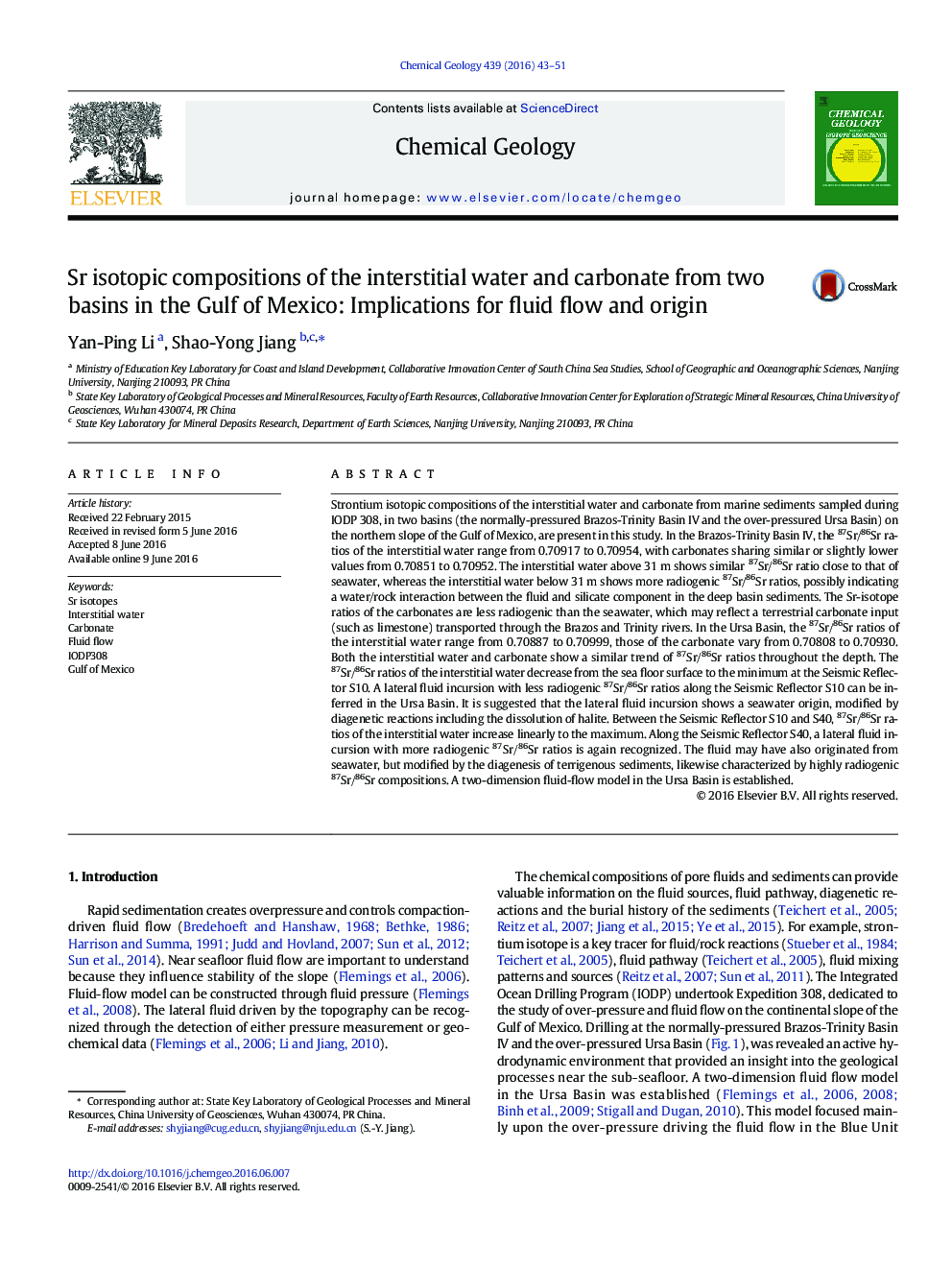| کد مقاله | کد نشریه | سال انتشار | مقاله انگلیسی | نسخه تمام متن |
|---|---|---|---|---|
| 4698253 | 1637535 | 2016 | 9 صفحه PDF | دانلود رایگان |

Strontium isotopic compositions of the interstitial water and carbonate from marine sediments sampled during IODP 308, in two basins (the normally-pressured Brazos-Trinity Basin IV and the over-pressured Ursa Basin) on the northern slope of the Gulf of Mexico, are present in this study. In the Brazos-Trinity Basin IV, the 87Sr/86Sr ratios of the interstitial water range from 0.70917 to 0.70954, with carbonates sharing similar or slightly lower values from 0.70851 to 0.70952. The interstitial water above 31 m shows similar 87Sr/86Sr ratio close to that of seawater, whereas the interstitial water below 31 m shows more radiogenic 87Sr/86Sr ratios, possibly indicating a water/rock interaction between the fluid and silicate component in the deep basin sediments. The Sr-isotope ratios of the carbonates are less radiogenic than the seawater, which may reflect a terrestrial carbonate input (such as limestone) transported through the Brazos and Trinity rivers. In the Ursa Basin, the 87Sr/86Sr ratios of the interstitial water range from 0.70887 to 0.70999, those of the carbonate vary from 0.70808 to 0.70930. Both the interstitial water and carbonate show a similar trend of 87Sr/86Sr ratios throughout the depth. The 87Sr/86Sr ratios of the interstitial water decrease from the sea floor surface to the minimum at the Seismic Reflector S10. A lateral fluid incursion with less radiogenic 87Sr/86Sr ratios along the Seismic Reflector S10 can be inferred in the Ursa Basin. It is suggested that the lateral fluid incursion shows a seawater origin, modified by diagenetic reactions including the dissolution of halite. Between the Seismic Reflector S10 and S40, 87Sr/86Sr ratios of the interstitial water increase linearly to the maximum. Along the Seismic Reflector S40, a lateral fluid incursion with more radiogenic 87Sr/86Sr ratios is again recognized. The fluid may have also originated from seawater, but modified by the diagenesis of terrigenous sediments, likewise characterized by highly radiogenic 87Sr/86Sr compositions. A two-dimension fluid-flow model in the Ursa Basin is established.
Journal: Chemical Geology - Volume 439, 7 November 2016, Pages 43–51